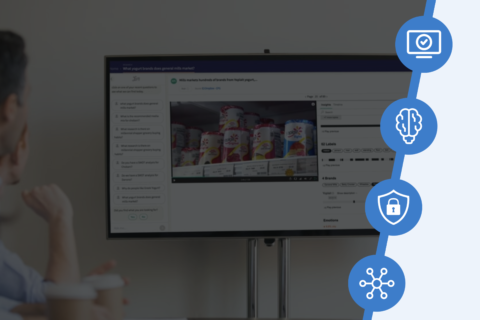Some things never change. Organizations through the ages survive and succeed because of their ability to listen to what customers want and deliver relevant products or services.
Customer centricity is a popular buzzword, but the concept is ageless. I recall going to our local grocery with my mum as a child. Such a lovely shopping experience; the shop keeper would greet us in a friendly manner and walk us through all seasonal veg & fruit from the morning delivery. It was so pleasant!
Nowadays, given that retailers have too many stores, with too many shoppers visiting, the personal connection needs to be developed in alternative ways. This is where technology can help restore the emotional attachment between customers and retailers, while creating a warm and relevant shopping experience through Customer Experience Management (CEM). Due to the fact that CEM programs are normally online, real time and ongoing, a direct dialogue with shoppers is already in place.
Having an ongoing dialogue with customers is valuable to retailers in any sector and can address issues before they erupt in social media. Additionally, CEM programs are invaluable in evolving the shopping experience based on actual customer feedback (i.e.) categories not currently available, shelf organization, needs from store staff etc.
But there is more to CEM than meets the eye. The connection point (invitation) with the customer for CEM feedback is usually the POS receipt or loyalty app. This provides an opportunity to connect responses on last store visit with actual customer receipts. e.g. how much spent on each product/ category etc
Some feedback communicated by clients using CEM programs include…
- How is CEM different to other programs which you have in place? CEM provides 24/7 information, and therefore can be linked with internal data such as actual receipts/transactions or loyalty card data.
- What was the added value when you linked receipt with CEM data? The added value was the “brand view” which is pretty insightful for category commercial teams. This is not achievable with other tools. Moreover, it provides the opportunity to link customer feedback with basket size, basket value, and shopping missions (routine fill in, special occasions, shop for today etc).
- What was the added value when you linked Loyalty data with CEM? Connecting loyalty data provides an added window of opportunity to derive insights at customer level and track CEM amongst different customer segments (Promo sensitive, Risky customers, High Valued customers).
- Which internal stakeholders are working with the output from this program? Other than the customer service teams which are dealing with customer issues, senior leadership, insights and marketing teams as well as store managers review the dashboards frequently. The HR team uses store level KPI’s for designing relevant, targeted training/retraining for shop floor staff.
- When you started reviewing the data did you find that there was additional value which you did not consider initially? It wasn’t 100% unexpected but being able to link results to current business KPI’s gave us higher actionability than expected, mainly because of the big sample sizes (thousands of responses) at a store, and even at a category/brand level.
- Is this program helpful to keep track of competitive activity at store level? Well we pick up some helpful trends like, the percentage of shoppers who shop exclusively from each of our stores and the percentage shopping from other stores in their repertoire . Tracking this over time provides an important KPI at store level. Sometimes we need to better understand what/why shoppers buy from certain competitor stores by reaching out to opted in customers, with follow up questions.
- You have periodical promotions in store with condoles or special displays. How do you use the data for promo reviews? Indeed, this tool helps to evaluate promo mechanics. Promos are changing quite frequently, so this is a tailored tool to track them across time and compare effectiveness within different activations.
- How about comments from Customers on out of stocks (OOS). How are you using this information? It helps to define unmet needs in terms of assortment. Another useful measure is tracking changes of OOS over time (% of customers not finding what they were looking for by category/department/store).
- So what are the key learnings following CEM program implementation? This could become a very powerful tool but it is critical to get key stakeholders engaged from the very beginning so that the data generated is very relevant and it addresses the needs of the different teams/departments. Moreover, it is important to define a roadmap to be able to develop the program into a more strategic tool in the mid-term, as the volume of trend data increases.
A win win approach for retailer’s keen to listen and for the Shopper keen to voice their opinion.


